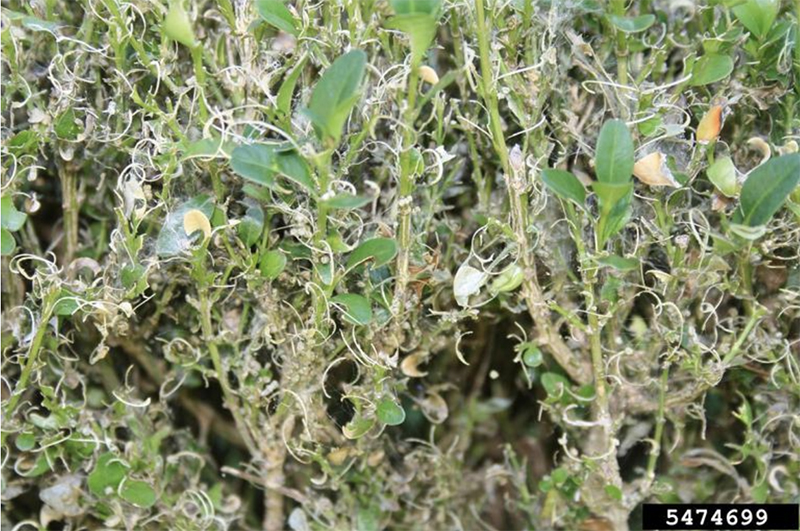What's Hot at the PPDL
June 10, 2021
Box Tree Moth
Megan Abraham (Division Director & State Entomologist) - MAbraham@dnr.IN.gov
The DNR has learned of a new pest that has been introduced to the United States through the nursery industry. The box tree moth (Cydalima perspectalis) feeds primarily on boxwood species, however alternate hosts include both burning bush and holly. First reports of an infested nursery in Canada a few weeks ago have led to the discovery that several states have received potentially infested material. several of those locations shipped stock to other states. There are reports that track at least a few plants from the infested nursery of origin to the state of Indiana. At this point the DNR has NOT confirmed the existence of this pest in Indiana but we do want to alert the nursery industry and homeowners of the potential for this pest to spread and what to do if you spot it. Box tree moths are difficult to distinguish from native moths in our environment. However, the damage they create is quite distinguished from other species. Caterpillars of this species can cause heavy defoliation and will even attempt to feed on the bark if the plant has been stripped of its leaves. In addition, the caterpillars tend to spin silken webs to hold leaves together to form areas protected from predators in which to feed. For more information on this pest see the USDA Box Tree Moth Page or the USDA Pest Alert.
Click image to enlarge
Please contact the Indiana DNR with any suspicious finds;
866- NO EXOTIC (866-663-9684) or DEPP@dnr.in.gov.




